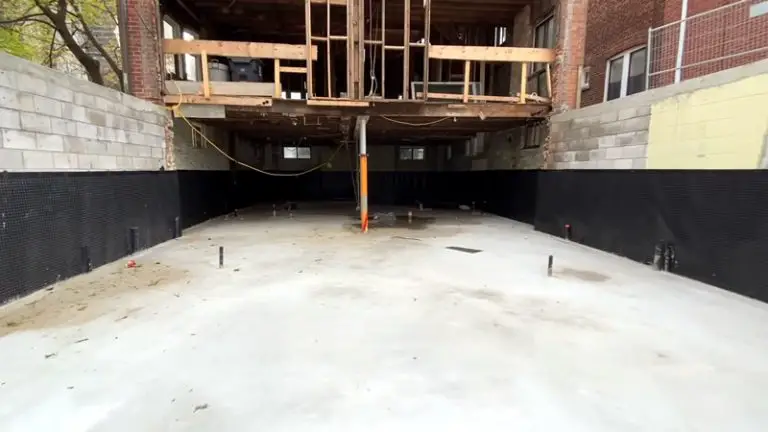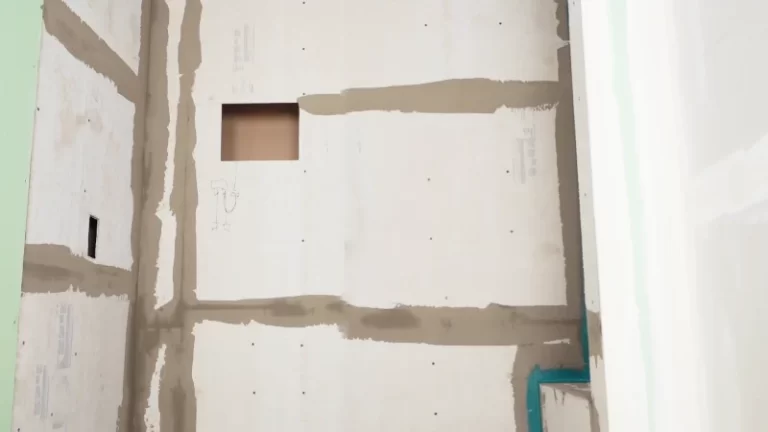6×6 Vs 8×8 Post [Which One is Better? in Which Condition?]
Construction projects require sturdy and reliable support structures, and posts play a crucial role in providing this support. Posts come in various sizes, with the two most common being 6×6 and 8×8 posts.
Understanding the differences between these two sizes is essential when choosing the right post for your construction project. This blog will provide a comprehensive comparison between 6×6 and 8×8 posts, highlighting their key features, benefits, and drawbacks.
Whether you are building a deck, a fence, or any other type of structure, this information will help you make an informed decision.
You'll Learn About
Understanding 6×6 Posts
6×6 posts are commonly used in construction for various purposes such as supporting beams, roofing, decks, and fences. These posts are an important component in any construction project and play a crucial role in ensuring the stability and safety of the structure. It is essential to understand the dimensions, characteristics, advantages, and limitations of 6×6 posts before using them in any construction project.
Dimensions and Characteristics of 6×6 Posts
6×6 posts are rectangular in shape and measure 6 inches by 6 inches in size. They are usually made of wood, concrete, or metal, and can vary in length according to the specific requirements of the construction project. 6×6 posts are known for their strength and stability, which makes them ideal for use in a variety of construction projects.
Advantages of 6×6 Posts
The primary advantage of 6×6 posts is their strength and stability. They are capable of supporting heavy loads, making them ideal for use in construction projects that require a strong foundation. They are also resistant to rot, decay, and termites, which helps to extend the life of the post and the structure it supports.
6×6 posts are easy to install and can be cut to size if needed, making them a versatile and flexible option for construction projects.
Limitations of 6×6 Posts
One of the main limitations of 6×6 posts is their weight. They can be heavy and difficult to move, which can make installation challenging in some situations. Additionally, they can be more expensive than other types of posts, making them less cost-effective for certain construction projects.
The wood used in 6×6 posts can be subject to warping, which can impact the overall stability of the structure if not addressed.

6×6 posts are an important component in any construction project and offer several advantages, including strength and stability. However, they also have certain limitations, including weight and cost, which should be taken into consideration before using them in a construction project.
Understanding the dimensions, characteristics, advantages, and limitations of 6×6 posts is essential to making informed decisions about their use in construction.
Understanding 8×8 Posts
An 8×8 post refers to a post that measures 8 inches in both height and width. This type of post is often used in construction projects for its ability to provide stability and support. 8×8 posts are typically made from materials such as wood, concrete, or steel.
They are also available in different lengths to accommodate the specific needs of the construction project.
Advantages of 8×8 Posts
One of the main advantages of 8×8 posts is their increased strength and stability compared to smaller posts like 6×6. This is due to their larger size, which allows for greater load-bearing capacity. Additionally, 8×8 posts can often be used in construction projects where larger loads or taller structures are required, making them a suitable option for building decks, pergolas, or large sheds.
Another advantage of 8×8 posts is that they offer more visual impact and can add an aesthetic element to a construction project. For example, they can be used to create a striking architectural feature or used to frame a view or entrance.
Limitations of 8×8 Posts
One of the main limitations of 8×8 posts is that they may be more expensive than smaller posts, such as 6×6. This is due to the increased material and labor costs associated with their larger size. Additionally, 8×8 posts may not be suitable for smaller construction projects or where space is limited, as they can take up more space and may not fit with the overall design of the project.
Another limitation of 8×8 posts is that they may require additional support or reinforcement, such as brackets or anchors, to ensure their stability and safety. This can add to the overall cost and complexity of a construction project.
8×8 posts offer increased strength and stability, and can provide a visual impact to construction projects. However, they may also be more expensive and require additional support, making them a suitable option for larger projects where space and cost are not a concern.
Comparison Between 6×6 and 8×8 Posts
One of the key factors to consider when choosing between 6×6 and 8×8 posts is their load capacity. The larger size of 8×8 posts means that they are able to support more weight than 6×6 posts. This makes 8×8 posts ideal for larger construction projects or structures that require extra support.
For example, an 8×8 post can typically support up to 10,000 pounds, whereas a 6×6 post can only support up to 6,000 pounds.
Price Comparison
Another factor to consider is the cost of the posts. While 8×8 posts are generally more expensive than 6×6 posts due to their larger size, it is important to keep in mind that their added strength and load capacity may offset the added cost in the long run. It may be more cost-effective to use 8×8 posts in larger construction projects where their extra strength is necessary, as it will save on the cost of having to use additional posts or supports.
Availability
Availability is another factor to consider when choosing between 6×6 and 8×8 posts. 6×6 posts are more commonly available, as they are widely used in residential construction. 8×8 posts, on the other hand, are typically only used in larger commercial and industrial projects.
This may make it more difficult to find 8×8 posts, especially in smaller communities. It is important to check the availability of the posts in your area before making a final decision.
both 6×6 and 8×8 posts have their advantages and limitations, and the choice between the two will depend on the specific needs of your construction project. Factors such as load capacity, price, and availability should all be taken into consideration when making a decision.
Choosing the Right Post for Your Project
When it comes to choosing the right post for your construction project, there are several factors that need to be taken into consideration. Some of the most important factors include the load capacity, budget, and availability of the posts. You should also consider the specific needs of your project and any local building codes that may apply.
Evaluating Your Needs
To determine which post is right for your project, you need to start by evaluating your needs. Consider the weight and size of the structure you are building, as well as the conditions it will be exposed to.
For example, if you are building a deck or a pergola, you may not need a post as strong as you would for a shed or a carport. You should also consider any specific requirements or restrictions that may apply to your project, such as zoning or zoning restrictions.
Making an Informed Decision
Once you have considered all of the factors, you can make an informed decision about which post is right for your project. You can compare the load capacities, prices, and availability of different posts to find the one that best meets your needs. You may also want to speak with a contractor or a building supply specialist to get additional advice and information about the options available to you.
Ultimately, the right post for your project will depend on a variety of factors, including your budget, the size and weight of your structure, and the conditions it will be exposed to. By taking the time to carefully evaluate your needs and make an informed decision, you can ensure that your project is built to last and meets all of your requirements.
Frequently Asked Questions
What are the typical uses of 6×6 and 8×8 posts in construction?
6×6 and 8×8 posts are commonly used in a variety of construction projects, including building decks, porches, pergolas, fences, retaining walls, and other outdoor structures. They can also be used as support beams in larger structures such as barns or sheds. 6×6 posts are often used for lighter-duty applications, while 8×8 posts are more suitable for heavier-duty applications, such as supporting large roof structures.
What are the differences between 6×6 and 8×8 posts in terms of strength and durability?
The primary difference between 6×6 and 8×8 posts lies in their size and strength. 8×8 posts are larger and stronger than 6×6 posts, making them more suitable for heavy-duty applications. 8×8 posts can typically support more weight and provide greater stability than 6×6 posts, which makes them ideal for larger structures, such as sheds or barns.
How do the prices of 6×6 and 8×8 posts compare?
The price of 6×6 and 8×8 posts can vary greatly depending on the material used and the location of the supplier. On average, 6×6 posts are typically less expensive than 8×8 posts due to their smaller size. However, the cost of 8×8 posts is still reasonable, especially when considering the extra strength and durability they provide.
What are the factors that should be considered when choosing between 6×6 and 8×8 posts?
The choice between 6×6 and 8×8 posts depends on a variety of factors, including the type of project, the size and weight of the structure, the budget, and the intended use of the structure. For lighter-duty projects, 6×6 posts may be sufficient, while 8×8 posts are recommended for heavier-duty applications. It is also important to consider the type of soil or ground the posts will be installed in, as well as the climate and weather conditions in the area.
Are there any alternative materials to 6×6 and 8×8 posts that offer similar strength and durability?
There are a variety of alternative materials that can be used in place of 6×6 and 8×8 posts, including engineered wood products, such as laminated veneer lumber (LVL) and parallel strand lumber (PSL), as well as steel and aluminum.
These alternative materials offer similar strength and durability to traditional wood posts, but may be more expensive and may require special tools and equipment to install. Ultimately, the choice of material depends on the type of project, budget, and intended use of the structure.
Editor’s Note
In summary, the proposed design of a flat roof with engineered trusses, 2x10x16 single ledger and 2x10x12 double outside beams, and 6,000-pound per side joist hanger is strong and capable of holding the roof with the combination of the joist hangers and two 6×6 posts.
The wind load should be taken into consideration, and hurricane ties can be used to connect the trusses to the beams. It is suggested to use Simpson H1 for the trusses or a similar product and to add cross braces in the “attic” to help against twisting.
A 6×6 post is sufficient, and the posts should be held to concrete footings with metal brackets. The local building code will specify the necessary loads, and the equations for determining the maximum load on each column are available online. Preventing Post Bending is very important.
Conclusion
Choosing the right post size for your construction project is an important decision that can impact the overall stability and longevity of your structure. 6×6 and 8×8 posts are two popular options that have their own unique advantages and limitations.
It is important to consider factors such as load capacity, price, and availability when making your decision. By evaluating your specific needs and making an informed decision, you can ensure that your project is built to last and meet all of your requirements.
In summary, both 6×6 and 8×8 posts have their pros and cons and the choice ultimately depends on the specific requirements of your project. It is recommended to consult with a professional or do thorough research before making a final decision.
As the construction industry continues to evolve and new technologies are introduced, it will be important to stay up-to-date on the latest developments and advancements in building materials and techniques.





